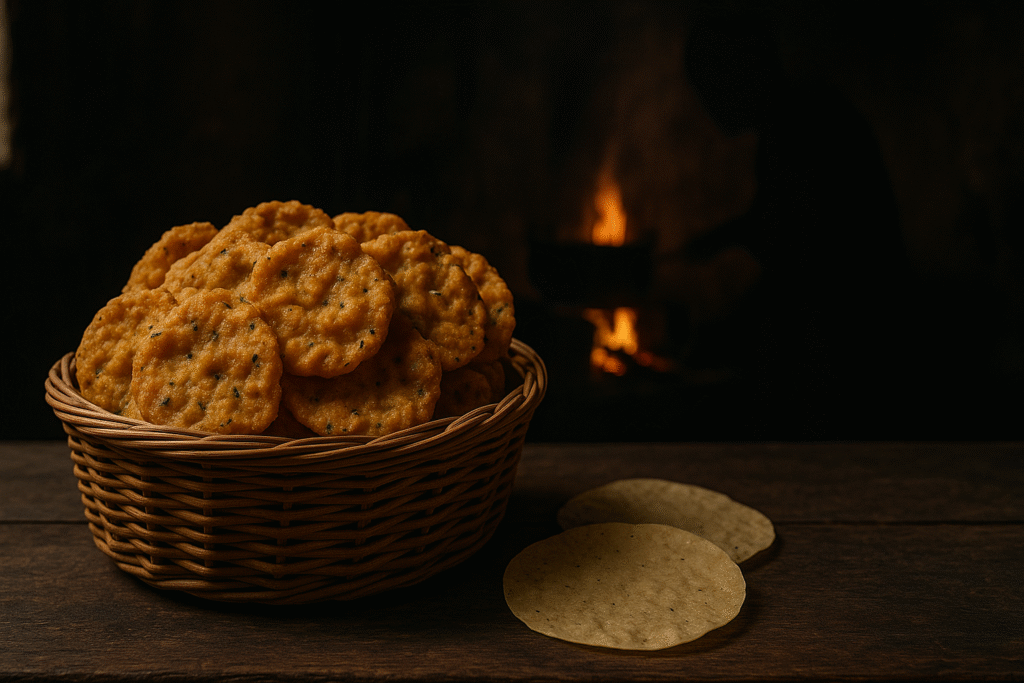Pappadavada, also known as Pappadaboli, is a popular tea-time snack in Kerala and Tamil Nadu. It can also be called Pappada Bajji, as it’s dipped in batter and deep-fried just like any other bajji. Its origin is unclear – it may have started as a street food or as a creative idea from mothers in the kitchen. Either way, these thin, spicy papadams are a perfect companion for tea.

The origin of pappadam can be traced back to early texts in Sanskrit and Tamil, dating from around 500–1000 CE. In South India, it’s called pappadam, while in North India, it’s known as papad. Traditional pappadams are made using urad dal flour, salt, and sesame oil, and sometimes spiced with black pepper. The thin discs are sun-dried and stored in airtight containers.
The batter for pappadavada can be made using either rice flour or gram flour, depending on your preference. Rice flour gives the pappadavada a slightly harder and crispier texture. Since it’s a quick snack, it doesn’t require fermentation or any long process – and that’s what makes pappadavada so popular.
Kerala Pappada Vada
Ingredients
Instructions
-
Soak raw rice for 2–3 hours.
-
Grind the soaked rice with the required amount of water into a smooth paste.
-
Add chili powder, turmeric powder, salt, sesame seeds, and asafoetida powder to the batter. Mix well to combine.
-
Heat oil in a deep pan over medium-high flame.
-
Dip each dry pappadam (papad) into the batter, ensuring both sides are well coated.
-
Gently slide the coated pappadam into the hot oil.
-
Fry both sides until golden brown and crispy.
-
Remove and drain excess oil.
-
Store the pappadavada in an airtight container to retain its crispness.
-
Serve hot with tea. A perfect companion for rainy evenings!


